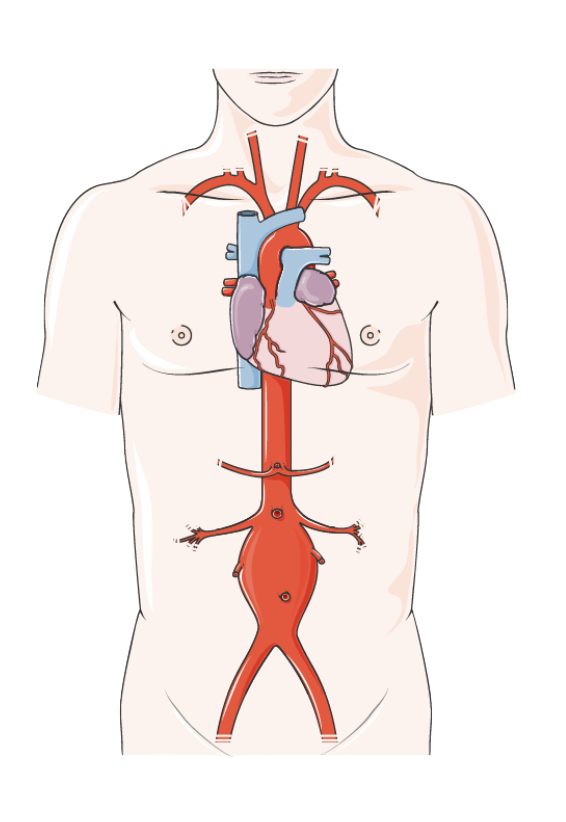What is an Abdominal Aortic Aneurysm?
Abdominal aortic aneurysm occurs when the abdominal aorta, an essential blood vessel that supplies blood to the legs, weakens and a balloon-like dilation develops. If the dilation continues to grow it is at risk of rupturing.
RISK FACTORS
INCREASING AGE
SMOKING HISTORY
HIGH CHOLESTEROL
HIGH BLOOD PRESSURE
CONNECTIVE TISSUE DISORDERS
SYMPTOMS
COMMONLY PATIENTS EXPERIENCE NO SYMPTOMS
SUDDEN SEVERE PAIN IN ABDOMEN OR BACK*
*seek immediate medical attention
TREATMENT OPTIONS
BLOOD PRESSURE & CHOLESTEROL CONTROL
SMOKING CESSATION
REGULAR EXERCISE
SURGERY:
minimally invasive options (endovascular repair) or open surgery

Both cigarettes and unhealthy foods are prominent factors in high blood pressure and increased cholesterol. To ensure the risk of aneurysm growth is mitigated, a healthy diet and exercise should be maintained.

This graphic depicts an AAA (Abdominal Aortic Aneurysm).
This type of AAA is called a fusiform or unilateral aneurysm due to the swelling being of equal proportions on both sides. Generally, aneurysms can simply be monitored, and as long as they remain below a size threshold or do not rupture, there is no immediate need for surgery.
DISCLAIMER
The information provided is for informational purposes only and is not to replace professional medical advice, diagnosis, treatment or care. Always seek the advice of a physician or other qualified health provider concerning any questions you may have regarding the above information and any medical condition you believe may be relevant to you or to someone else. The above information is not exhaustive and does not cover all diseases, physical conditions or their treatments.
